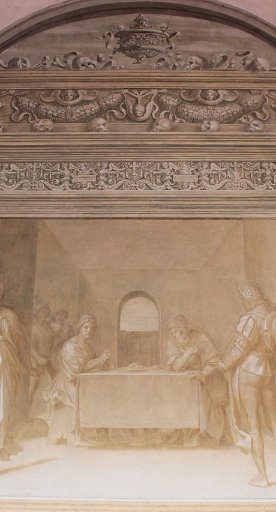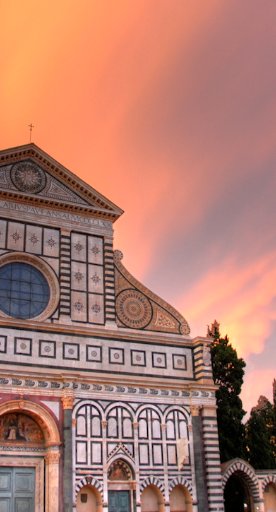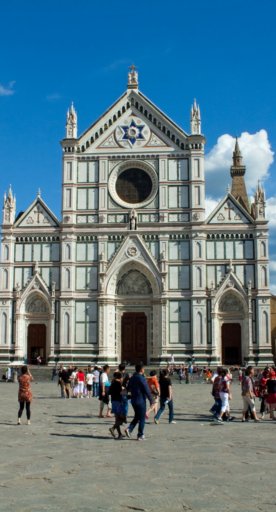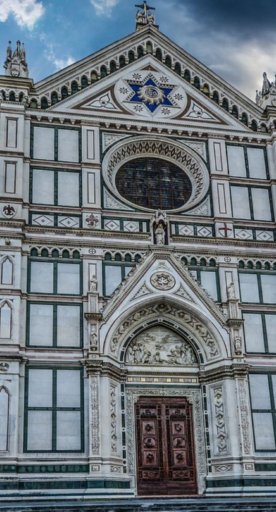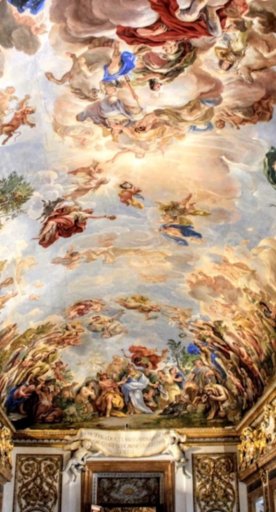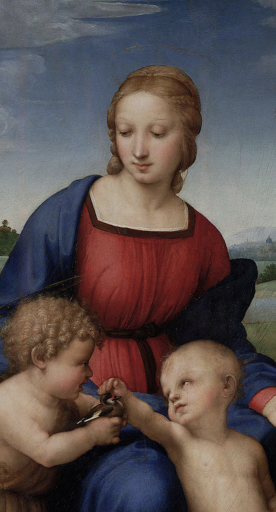The Birth of Venus
brush
Artworks
One of the Uffizi's most famous works on display
This is unquestionably one of Sandro Botticelli’s most famous works, along with the Primavera and Pallas and the Centaur, which were commissioned by the nephew of Lorenzo dei Medici, Lorenzo di Pierfrancesco de' Medici. All three of these paintings were to be displayed in the Medici country villa, Villa di Castello, located in the surrounding countryside.
Nowadays, the Birth of Venus is cherished in the Uffizi Gallery.
The Birth of Venus is one of the most beautiful paintings ever executed during the Renaissance. It is tempera on canvas (172x278cm), and was painted in 1483-1485. The classical goddess Venus emerges from the water on a shell, blown towards shore by the Zephyrs, who is being embraced by Chloris, the nymph representing the physical act of love.
The scene is set on the island of Cyprus. Venus is joined by one of the Horae, goddesses of the seasons, who hands her a flowered cloak. Here, love is an energy force that vivifies, like the energy force behind nature. The composition is harmonious and delicate, and the lines are elegant. The colours are light and pure, and the forms are precise and refined. The nudity of Venus is the exaltation of beauty idealized in its most classical form, and it is also symbolic of the purity of the soul. The vital blow coming from the two lovers, Zephyrs and Chloris, and the nymph on the other side of Venus symbolize these ideals and create a triangle, with Venus in the middle as mediator, thus creating balance in the entire scene.
In those years, the esthetics of Neo-Platonism attempted to reconcile Man’s moral and spiritual qualities with physical beauty. In order to achieve this, all of the elements in the painting are autonomous, and Botticelli exasperates the plasticity of the figures, and expresses a great sense of movement, not by the figures themselves (which are not moving at all) but by the curved lines of the painting.
In Botticelli, Venus symbolizes the highest forms of pure reason and beauty, in contrast to the more earthly Venus of the Primavera. Symbolism in Botticelli’s paintings takes on a role of utmost importance. Here, he privileges the new Christian ideals and those of classical world. Seemingly ‘pagan’ in nature, the painting is not pagan at all. It does hold some Christian symbolism, like the flowers of the cloak offered to Venus (which is pink, representing the Baptism of Christ), the myrtle branches and the fleur-de-lis.
There is not much depth to this painting, however, especially when compared to the Primavera. The figures seem flat and there is less visual perspective.



